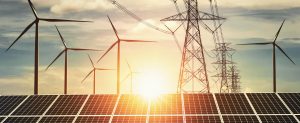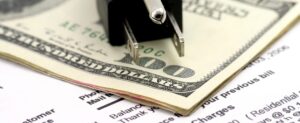At Utah Clean Energy we have been thinking a lot about the kind of society we want to help build as we work together to move beyond COVID-19 and create “healthy, thriving communities for all.” The coronavirus pandemic and the Movement for Black Lives is revealing not only the deep systemic racial and economic injustices in our society, but just how closely linked our environmental health and our economic health are. For example, Utah’s Hispanix/Latinx, American Indian, and Hawaiian and Pacific Islander communities have a disproportionately high share of COVID-19 cases, despite being a small portion of Utah’s total population. As our director Sarah Wright recently wrote with Davis Smith of Cotopaxi in the Salt Lake Tribune, “we can rebuild our economy and put Utah back to work creating a society even more resilient, with cleaner air, and a healthy climate.”
As a country, we need to tackle both climate change and racial and economic injustice head on. We cannot simply try to do a re-set of our economy and society that does not account for the massive and growing damage that will happen as a result of climate change. And we cannot ignore the vast gaps in wealth and vulnerabilities to pollution and illness. We need to build something better. And in doing so, we will create a society that is healthier, more resilient, and more equitable for everyone.
So what does this look like in practice? Where do we begin?
First, it means planning for and investing in healthy communities. That begins with local, state, and national policies to create affordable housing in every community. We also want to build communities where everyone has opportunities to walk, bike, and take public transportation to work. Public transportation will be a challenge in the era of COVID-19, but it’s essential to reducing greenhouse gas emissions and allowing everyone to get to work. And we should be removing artificial barriers to building more dense, multifamily housing that can help integrate our communities and give young families and professionals a chance to purchase a home early. A recent report by the New York Times has found the racial segregation through redlining has left communities of color burdened with much higher extreme temperatures than more affluent, white communities. (For more on housing, see our recent piece on redlining in Salt Lake City).
Second, our economic strategy must prioritize growing our energy efficiency and clean energy workforce. The job losses nationally in in energy efficiency and clean energy sector have been substantial, with over 500,000 clean energy workers losing their jobs since the start of the pandemic. A significant number of those losing work in the clean energy industry are people of color, especially Latino/a and Hispanic individuals. It is important for Congress and state leadership to take steps to put these workers and these companies back to work by providing timely and targeted relief. This means making federal tax credits available as direct-pay to clean energy companies, and making investments in energy efficiency services for low and moderate-income citizens, and energy upgrades for school and commercial buildings, as we wrote to our members of Congress in May. As of this writing, it appears that Congress is not likely take any significant action before the November elections. If action is not taken now, this must be a priority for our next governor and our next president.
Third, a true recovery plan must transform our energy and transportation systems. We must accelerate the transition to zero-emissions electricity sources, electric buses and cars, undertaking a major effort to do energy upgrades to our homes and buildings, and embracing the exciting opportunities offered by net-zero energy building technology. A recent analysis of “deep decarbonization” by Rewiring America found that decarbonizing our economy would make substantial reduction in air pollution, which would have major benefits for communities of color. But this energy transition has to be about more than technology. We must invest in our more vulnerable communities, communities of color and rural communities, to ensure that they receive a major share of new jobs and investment. This will ensure that not only will we be reducing the risks of climate change, but we will help provide a better living for communities that are too often left behind during our economic transitions.
We are at a challenging moment. But if we address our climate change and racial justice challenges together, we are much more likely to create not only a livable future, but better communities for everyone.





